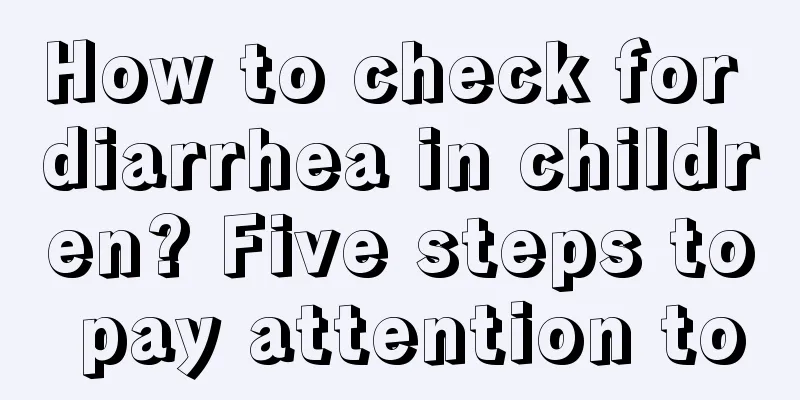What to do if your baby can't crawl? Reasons why your baby can't crawl

|
Learning to crawl is one of the skills that babies need to grow up. Today, let’s talk about how to guide your baby to crawl if he/she still can’t crawl. And what methods can be used to help your baby learn to crawl. Baby can't crawlMost babies learn to crawl between 6 and 10 months. If your baby can't crawl, you need to find out why, because every baby must learn to crawl to grow healthily. Crawling is a whole-body exercise for children. In addition to the participation of large muscle groups, small hands and feet must support the body to move forward. The small muscle groups of children's limbs are also exercised and developed, which provides conditions for the further development of fine movements in the future. Crawling also allows infants to develop their perceptual intentions, directional reasoning ability, and target-finding activities in advance. Crawling also promotes children's spirit of exploration and deepens their interactions with others. Normal babies can crawl at 8 months old. The development of baby crawling movement includes the following processes: hips are higher than head, lower limbs are flexed in place, hips and head are at the same height; two hands support, chest off the bed; forward movement of the upper body and backward crawling; forward movement of the lower body, gradually transitioning from belly crawling to hands and knees crawling; standard crawling, one upper limb and the opposite lower limb alternately extend and flex on the diagonal line to crawl; flexible forward movement, can crawl at will with two hands and two knees, two hands and one knee, two hands and two feet, etc. Completion of two-hand support (two elbows support and head lifting are the prerequisites for two-hand support); realization of hands and knees crawling; further improvement of upright and balance reaction; ability to change posture from belly crawling position to four-legged crawling position and then to belly crawling position; completion of four-limb interactive movement pattern; completion of single elbow support in side-lying position. The mother needs to train the baby slowly. She can set up some games and provide the baby with a space suitable for crawling, or the baby will gradually like crawling. How to teach your baby to crawlBaby crawling is a natural stage in a child's growth process. Letting children go through each stage of growth solidly is the scientific parenting method. Because crawling is good for the baby's brain development, crawling babies will become smarter. Some mothers are too indulgent to their babies and often make them walk directly without crawling, or even use walkers to help their babies walk. In fact, this "fast" development beyond the normal stage is not necessarily a good thing. The development of human movement is managed by the nervous system, from simple to complex, and from uncoordinated to coordinated. The earliest movement that a baby implements is crawling. If babies crawl early and crawl more often, it is beneficial to the development of the brain, which can help the brain strengthen the regulation of the nerve movements of the hands, feet, and eyes, and develop the baby's intellectual potential. Data show that babies who crawl, crawl early, and crawl more often are more agile, have good coordination, are quick to understand, and have a strong desire for knowledge. At the same time, babies who crawl well and crawl well have strong cognitive abilities, picture recognition, speech formation and vocalization abilities, and the stability of walking and running in the future are better than those who do not crawl or crawl less. Crawling greatly expands the visual and auditory range of children before they can walk, which will undoubtedly improve the function of the entire brain. The posture changes from static to dynamic, and the range changes from point to surface. With a large amount of stimulation, thinking, language and imagination are naturally balanced and improved. Crawling is a whole-body exercise that can train the balance and reaction connection of the cerebellum, promote the entanglement of nerve fibers to form a network, and is conducive to the improvement of the structure of the brain and nervous system. It will definitely have a good impact on the baby's learning of language and reading. Furthermore, crawling requires the intermediate steps of raising the head, turning over, rolling, and crawling, and finally developing into real crawling, which mobilizes and stimulates the brain's enthusiasm. Moreover, crawling is the safest skill that children can master in infancy to expand their range of activities. Therefore, learning to crawl is actually an intensive training of the brain's nervous system function, which plays an irreplaceable and special role in the development of the brain. Most of the time, babies can't crawl because they are over-indulged and have improper parenting methods. The following methods are to train your baby to crawl1. Crawling: Let the baby lie prone on the bed, and the parents hold the baby's feet with their palms. The baby will automatically push your hands and crawl forward. If necessary, you can use a little external force to help the child move forward. Practice 2-4 times a day, crawling 2-4 meters each time, and persist every day. 2. Upper limb preparation: Lie on your stomach and raise your head. Use your arms to support your upper body and encourage your baby to raise his head. You can practice this 15 days after birth. Do this 3-4 times a day after one month, for a total of half an hour. 3. Single arm support body weight: After your baby has learned the above movements, you can use a toy above one of his arms to lure him to reach the toy when he is lying on his stomach. You can practice with both arms alternately. 4. Lower limb preparation: When the baby is around 3-4 months old, you can hold him on your thighs and have him kneel, or when you are lying on your back, have him kneel beside you and hold your body with his hands. Then you can recite nursery rhymes and play with him to exercise the supporting strength of his knees. 5. Coordinated crawling: Let the baby get on his hands and knees (or hands and feet), lift his abdomen off the bed, and crawl with his limbs coordinated. If the baby's abdomen cannot leave the bed or move forward, you can support the baby's abdomen with your hands or cover it with a long scarf, and use toys to induce him to crawl. Each crawling practice should not be too long. When the baby crawls on a hard ground, it is best to practice on a rubber mat to prevent pain caused by knee friction and unwillingness to crawl. |
<<: Is a baby who can't crawl not smart? Is a baby who can't crawl a sign of stupidity?
>>: Where is the baby's fontanelle? Where is the fontanelle?
Recommend
What services are included in a doula delivery? Does a doula delivery require an episiotomy?
Before giving birth, many mothers heard that the ...
Can babies eat dried shrimps? Is it good for babies to eat dried shrimps?
Babies are curious about food and it is up to the...
Which is better, Dawang Guangyu or Unicharm Royal Grade 1 Pampers diapers? - Comparison and evaluation
Dawang, Unicharm, and Pampers are all high-end ma...
Why can't you eat sweets when you have little amniotic fluid? Pregnant women need to pay attention to two major factors
Eating some sweet food in moderation is good for ...
What to do if you suffer from insomnia during pregnancy? 8 ways to improve it easily
Many pregnant women do not have insomnia problems...
Can pregnant women eat antlers? Who can't eat antlers?
Antlers are a green food that is edible by most p...
My wife got pregnant after having sex during her menstrual period. Can I get pregnant after having sex during my menstrual period?
Wife got pregnant after having sex during menstru...
When is the best time to add complementary foods to babies? The time and order of adding complementary foods to babies
Newborn babies usually rely on their mother's...
Pregnancy nutrition recipes What to eat during pregnancy is good for the baby's brain development
Diet is very important for every pregnant woman d...
How long should a baby take a nap? The best time for a baby to take a nap
Sufficient sleep is very important for the growth...
Can pears be eaten on an empty stomach? What will happen if you eat pears on an empty stomach?
Pear is a fruit with rich nutritional value, whic...
Why are babies prone to flatulence? Five major factors to pay attention to
Some babies have poor digestion and will experien...
Can't have a baby with polycystic ovary? Pregnancy with polycystic ovary requires choosing the right time
Polycystic ovary syndrome can affect women's ...
Is alkaline toothpaste effective in whitening?
Toothpaste is a daily cleaning product, and it is...
What are the benefits of cesarean section? 4 major benefits to pay attention to
Caesarean section and natural birth each have the...









